
I had to cancel my first reservation at Le Roi Fou (The Crazy King), at short notice. A few months later, during the Edinburgh Festival, I was perusing the menu outside hoping there was a spare table for walk-ins when a familiar voice greeted me by name. It was Jon Hemy, ex manager at The Pompadour, who, unknown to me, had moved to this smaller operation. Not only was there a free table, but he also remembered my previous cancellation. Now that’s what I call personal service!

Few new restaurants in Edinburgh have made such an immediate impact as Le Roi Fou. Within a year of opening it gained the 2017 Best New Restaurant at the Scottish Food Awards. 2018 saw three more accolades: Fine Dining Restaurant of the Year (Edinburgh News), Classic Cuisine Chef of the Year, (again from the Scottish Food Awards), and Winner of the Eating and Dining Awards (List Magazine). An encouraging mark in the 2019 Good Food Guide has consolidated these achievements
Located at Number 1 Forth Street in the Newtown district of Broughton – a stone’s throw from the York Place tram terminal – on the site of a former hamburger restaurant, Le Roi Fou is the joint venture of chef Jerome Henry and Isolde Nash, his creative director. Their aim is to promote a “joint appreciation of art, culture and food…in a bijou restaurant for bon vivants”
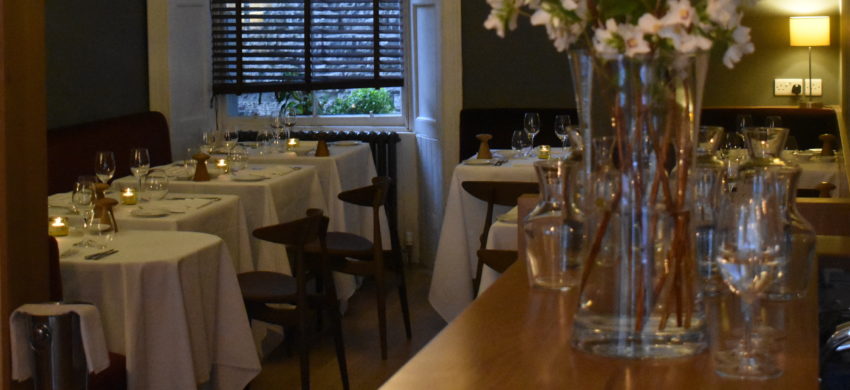
The brighter part of this“Restaurant des Artistes,” with window tables either side of the entrance, leads to a high tiled wooden bar and the more intimate “salon” at the back with its grey green walls dressed with fine art, and subdued lighting. Throughout, banquette seating, walnut chairs, fine napery and gold velvet curtains give a stylish, luxurious feel in an atmosphere which is relaxed and informal.
Heading a small team in the kitchen is French-Swiss born Jerome Henry. His is a bold move away from his twelve years’ experience in London: five years as head chef at Les Trois Garcons, a celebrity haunt in trendy Shoreditch, then seven years at Anton Mosimann’s Private Dining Club in pricey Belgravia. With such a distinguished CV, expectations would inevitably be high, and in this respect he does not disappoint.
A seasonally changing a la carte menu currently offers a wide choice of twelve starters (£7.50 to £17.50), ten mains (£15 to £31), and desserts and cheese, (£5 to £9.50). While vegetarians and pescetarians are well catered for, it is also pleasing to see such iconic dishes as oysters Rockefeller, seared foie gras and steak tartare. For a true gastronomic experience, there is a five course tasting menu (£50) with an optional cheese course (£9), and flight of wines for £40.
Prices are eminently fair, especially for lunch and pre theatre sittings – three courses for £24.50 – considering the quality of ingredients, the skill in cooking, and the generosity of spirit. Portions are generous even in the tasting menu with courses of a la carte proportions.
John Henry’s accomplished cooking is deeply rooted in the classics, free from faddish techniques and presentation – no smears, foams or spherification! Top quality raw materials are treated with respect, combinations showing a well-considered balance of tastes, textures and temperatures. Timing in meat, game and fish cookery is precise, allowing the natural flavours to shine. Saucing is a particular strength, elevating dishes such as lamb’s kidneys and sweetbreads with a grain mustard sauce. Occasional contemporary influences can be seen, say in a chimichurri sauce with calf’s liver or white miso and aubergine sauce dressing a scallop dish. Presentation is clean without being showy.
The select and mainly French wine list, overseen by sommelier Sam Webber, avoids greedy mark ups, with pleasing options by the glass. The flight of wines to accompany the tasting menu has inspired choices which complement the dishes perfectly.
My August tasting menu began with a amuse bouche of pleasingly light and crisp comte gougeres with a savoury dip.
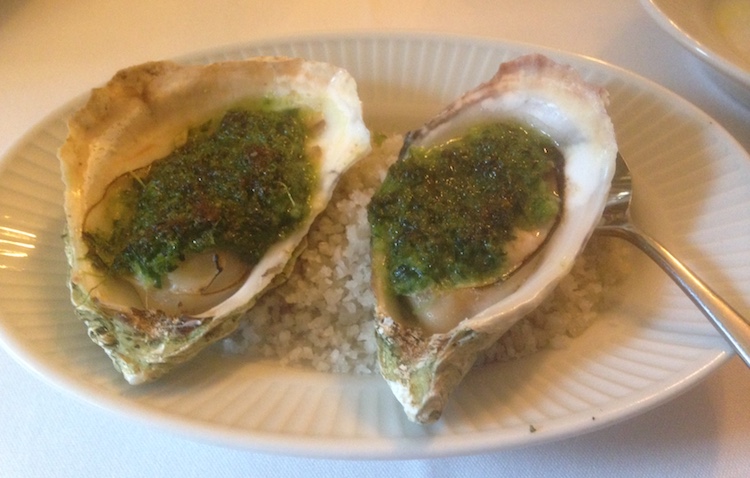
A second amuse featured two oysters Rockefeller, the aroma from the toasted shells complementing the flavour of the warm spinach and herb crumbed topping enveloping the plump bivalves. The buttery, briny juices of this decadent dish were greedily mopped up with the excellent focaccia bread.
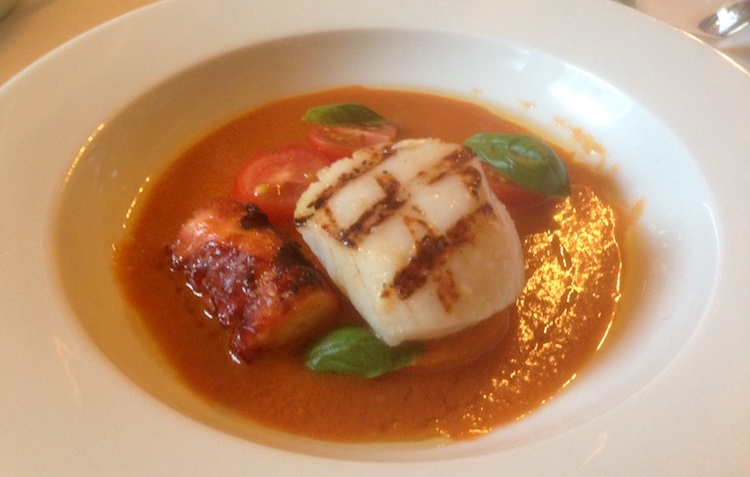
A giant hand dived scallop was grilled to produce a gently charred crust which contrasted with the delicate sweetness of the opaque flesh. Partnered with braised octopus, with its soft, texture and clean taste, the dish was bought together by a velvety sauce of confit Isle of Wight tomatoes at room temperature to maximise its flavour. This was a real triumph of seafood cookery in its combinations, timing, textures and temperatures. Wine: 2016 Loureiro, Dócil, Projectode Dirk Nieport, Lima Valley, Vinhos Verde, Portugal
Then followed three “tasting” dishes which, given their generous size, would easily pass for main courses elsewhere.
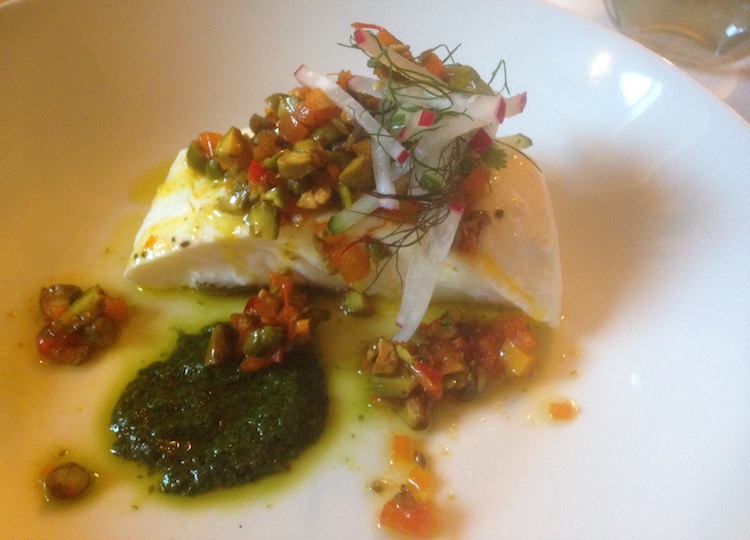
Equally accomplished as the previous course was a generous tranche of halibut, streamed to retain the moistness of its thick white flesh. Cucumber and radishes added freshness and texture whilst a salsa verde featuring pistachios and rocket gave a deep herbaceous lift. Wine: 2016 Pouilly Fumé, David & Hervé Millet, Domaine De La Loge, Loire, France
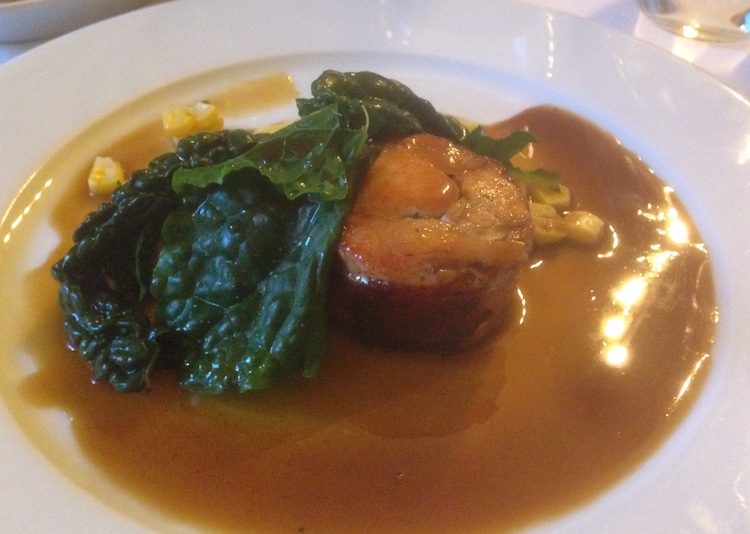
Cooking rabbit has been the downfall of many a good chef, but here it was handled with consummate skill. Braised and wrapped in pancetta, the meat was succulent in texture and mildly gamey in flavour. Sweetcorn in puree and kernel forms added different textures and sweetness, to contrast with the tangy bitterness of wilted cavolo nero. A light, flavoursome jus bought the dish together. Wine: 2015 Syrah, Alain Graillot & Ouled Thaleb, Tandem, Morocco
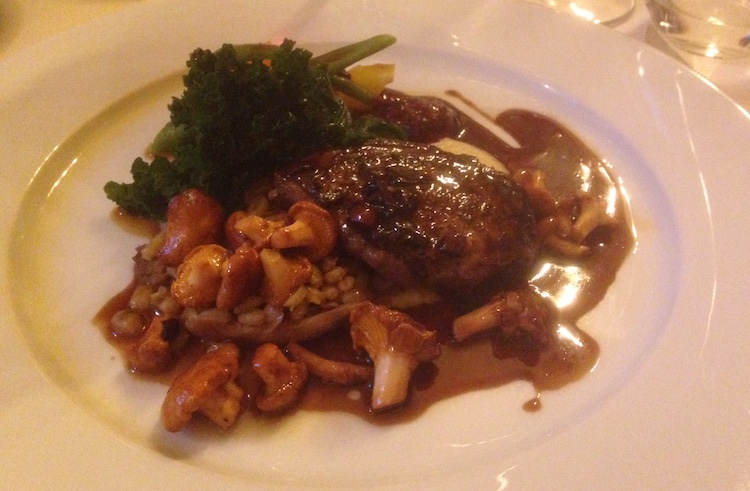
The final savoury course showcased a finely judged breast of new season grouse. Being only a fortnight into the season, the gaminess was – thankfully – muted whilst the texture had the melting softness of butter. Girolles and pearl barley added earthy elements to a dish finished with a sublime bread sauce and a rich jus with great depth of flavour. Wine: 2004 Chateau Musar, Gaston Hochar, Bekaa Valley, Lebanon
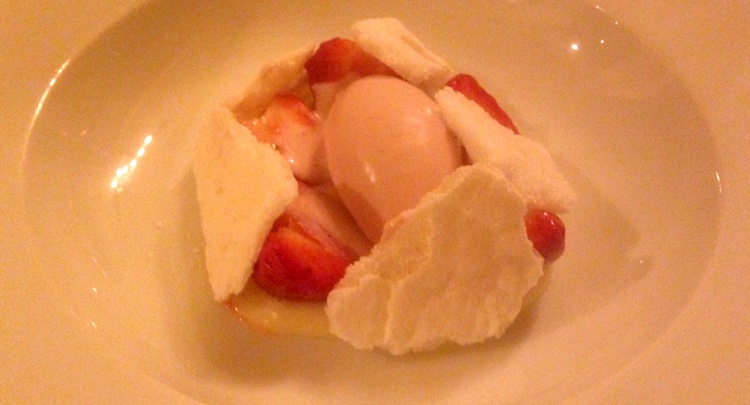
With such robust savoury dishes, a light, delicate dessert which encapsulated the tastes of summer was offered as the final course. This took the form of beautifully sweet Blacketyside Farm strawberries with fragrant elderflower curd, a silky smooth strawberry ice cream and shards of crisp meringue. Wine: 2016 Bugey, Cerdon, Renardat Fache, Method Ancestrale, France
Without doubt, this was one of the most impressive tasting menus I have eaten, and such a refreshing change from the dainty, insubstantial sous-vide courses, with their smears, blobs and foams encountered elsewhere. Flavour was paramount, with refined classical techniques doing full justice to the well sourced ingredients.
The whole experience was enhanced by the welcoming, knowledgeable and unobtrusive service overseen by John Hemy. Given the scale of the operation, the adage that “small is beautiful” definitely applies to dining at Le Roi Fou.
Fine Dining Guide will certainly return sample more of Jerome Henry’s exquisite cooking. No doubt 2019 will bring further accolades in the guides, especially from Michelin and the AA, which have yet to grant Le Roi Fou the recognition it deserves.



